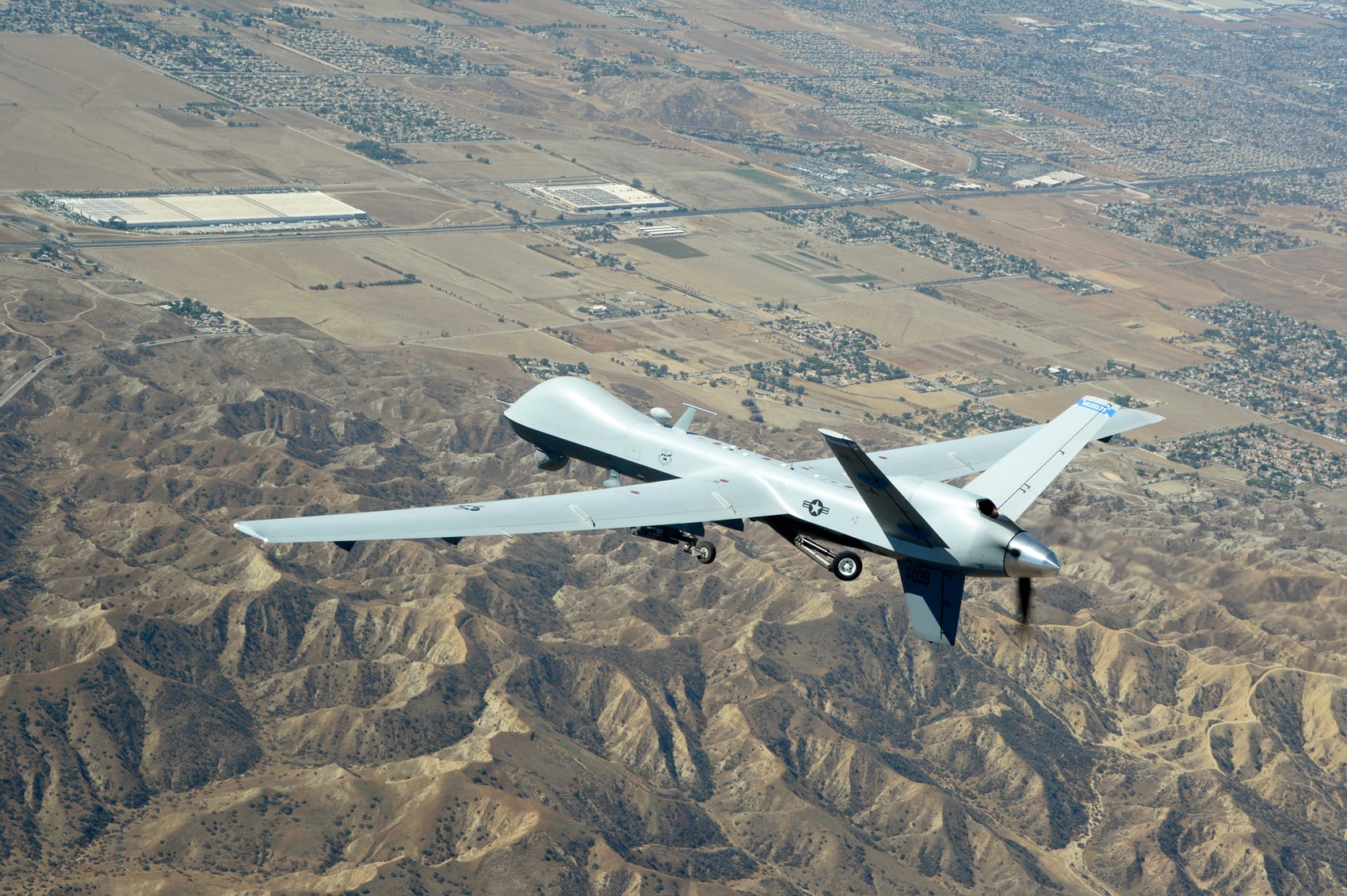WASHINGTON — U.S. aircraft launched two airstrikes against ISIS targets in al-Bayda Governorate of Yemen on Wednesday killing nine ISIS fighters, according to officials at U.S. Central Command.
Wednesday’s strikes are only the second series of strikes against ISIS militants in Yemen. In mid-October, U.S. unmanned aircraft struck an ISIS training camp in the same region, killing dozens of ISIS fighters.
“In the last ten days, U.S. forces have targeted and killed approximately 60 ISIS terrorists in Yemen,” an official at CENTCOM told Military Times.
“Strikes against ISIS targets disrupt and destroy the terrorists’ attack plotting efforts, leadership networks, and freedom of maneuver within the region,” CENTCOM said.
The U.S. has launched more than 100 strikes against terrorist targets in Yemen, according to Pentagon officials. However, the majority of airstrikes in Yemen have targeted one particular group, Al Qaida in the Arabian Peninsula, or AQAP.
RELATED

The death of 60 ISIS fighters by U.S. strikes over a ten-day period calls into question whether ISIS is attempting to reconstitute itself in ungoverned territories in Yemen, as its territorial holdings in Iraq and Syria crumble.
On Thursday morning, Iraqi forces launched an operation to liberate the Iraqi town of al-Qaim, the last territory still in ISIS possession in Iraq.
However, some analysts have pushed back on that assertion.
“I do not believe the airstrikes should be taken as an indicator that the group is establishing a greater foothold in the region than it had,” Maher Farrukh, an al-Qaida analyst for the Critical Threats Project at the American Enterprise Institute, told Military Times.
“In late July and August ISIS Wilayat al-Bayda temporarily increased its attack tempo against al Houthi-Saleh forces but it has not sustained that momentum,” he said.
According to Farrukh, the last ISIS attack in Yemen was carried out on August 21.
“We have not seen any other indicators that ISIS has grown in strength. One of the training camps the airstrikes hit, al Adnani, appears to be fairly rudimentary,” Farrukh said, referring to the Oct. 17 strike against an ISIS training camp.
The real issue in Yemen that needs to be examined more closely, Farrukh says, is the relationship between ISIS and AQAP.
“AQAP and ISIS cooperate on a tactical level in central Yemen against al Houthi-Saleh forces, they often co-claim attacks and likely share some militants,” he explained.
“ISIS’ continued presence in Yemen is likely sustained by its cooperation with AQAP, but it does not appear to be growing at this time.”
The partnership between the AQAP and ISIS highlights a complex political situation on the ground, as historically al-Qaida has been at odds with ISIS militants.
Al-Qaida chief Ayman al-Zawahiri has lashed out at ISIS in the past, and has previously called on his followers to reject ISIS. Moreover, AQAP has sworn allegiance to Zawahiri.
The two terror groups have been battling Iranian-backed Houthi rebels. The terror alliance against the Houthis puts the U.S. and the Saudi-led coalition against the Iranian-backed fighters in a precarious position.
The U.S. publicly supports Saudi Arabia’s goal of restoring President Abdrabbuh Mansour Hadi after a failed power handover with Ali Abdullah Saleh in 2014 launched a civil war, ultimately putting the U.S. at odds with Houthi fighters who are combating ISIS and al-Qaida. Houthi fighters have long complained of the central government’s failed policies to clamp down on al-Qaida fighters.
The U.S. is actively supporting Saudi efforts against the Houthis with intelligence and logistics support, while also combating ISIS and al-Qaida fighters who are also at war with the Houthis.
Military Times has reached out to CENTCOM for further information on whether there appears to be a growing presence of ISIS fighters in Yemen and has yet to receive a response.
Shawn Snow is the senior reporter for Marine Corps Times and a Marine Corps veteran.





